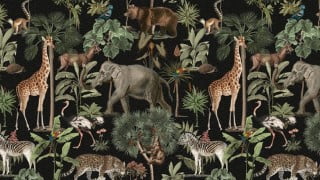Biology – Biodiversity and Its Conservation
Learn about the importance of biodiversity and its conservation efforts. Discover the patterns of species diversity and the causes of biodiversity loss. Explore the role of ecosystems in maintaining biodiversity and the ethical reasons for its conservation. This course is perfect for biology enthusiasts, beginners in biology, and those preparing for board and competitive exams. Boost your knowledge and understanding of biodiversity with this comprehensive course.
What you’ll learn
- Biodiversity
- Patterns of Biodiversity
- Loss of Biodiversity
- Biodiversity Conservation
SUMMARY
Since life originated on earth nearly 3.8 billion years ago, there had been enormous diversification of life forms on earth. Biodiversity refers to the sum total of diversity that exists at all levels of biological organisation. Of particular importance is the diversity at genetic, species and ecosystem levels and conservation efforts are aimed at protecting diversity at all these levels.
More than 1.5 million species have been recorded in the world, but there might still be nearly 6 million species on earth waiting to be discovered and named. Of the named species, > 70 per cent are animals, of which 70 per cent are insects. The group Fungi has more species than all the vertebrate species combined. India, with about 45,000 species of plants and twice as many species of animals, is one of the 12 mega diversity countries of the world.
Species diversity on earth is not uniformly distributed but shows interesting patterns. It is generally highest in the tropics and decreases towards the poles. Important explanations for the species richness of the tropics are: Tropics had more evolutionary time; they provide a relatively constant environment and, they receive more solar energy which contributes to greater productivity. Species richness is also function of the area of a region; the species-area relationship is generally a rectangular hyperbolic function.
It is believed that communities with high diversity tend to be less variable, more productive and more resistant to biological invasions. Earth’s fossil history reveals incidence of mass extinctions in the past, but the present rates of extinction, largely attributed to human activities, are 100 to 1000 times higher. Nearly 700 species have become extinct in recent times and more than 15,500 species (of which > 650 are from India) currently face the threat of extinction. The causes of high extinction rates at present include habitat (particularly forests) loss and fragmentation, over -exploitation, biological invasions and co-extinctions.
Earth’s rich biodiversity is vital for the very survival of mankind. The reasons for conserving biodiversity are narrowly utilitarian, broadly utilitarian and ethical. Besides the direct benefits (food, fibre, firewood, pharmaceuticals, etc.), there are many indirect benefits we receive through ecosystem services such as pollination, pest control, climate moderation and flood control. We also have a moral responsibility to take good care of earth’s biodiversity and pass it on in good order to our next generation.
Biodiversity conservation may be in situ as well as ex situ. In in situ conservation, the endangered species are protected in their natural habitat so that the entire ecosystem is protected. Recently, 34 ‘biodiversity hotspots’ in the world have been proposed for intensive conservation efforts. Of these, three (Western Ghats-Sri Lanka, Himalaya and Indo-Burma) cover India’s rich biodiversity regions. Our country’s in situ conservation efforts are reflected in its 14 biosphere reserves, 90 national parks, > 450 wildlife sanctuaries and many sacred groves. Ex situ conservation methods include protective maintenance of threatened species in zoological parks and botanical gardens, in vitro fertilisation, tissue culture propagation and cryopreservation of gametes.
EXERCISES
1. Name the three important components of biodiversity.
2. How do ecologists estimate the total number of species present in the world?
3. Give three hypotheses for explaining why tropics show greatest levels of species richness.
4. What is the significance of the slope of regression in a species – area relationship?
5. What are the major causes of species losses in a geographical region?
6. How is biodiversity important for ecosystem functioning?
7. What are sacred groves? What is their role in conservation?
8. Among the ecosystem services are control of floods and soil erosion. How is this achieved by the biotic components of the ecosystem?
9. The species diversity of plants (22 per cent) is much less than that of animals (72 per cent). What could be the explanations to how animals achieved greater diversification?
10. Can you think of a situation where we deliberately want to make a species extinct? How would you justify it?
Who this course is for:
- Biology enthusiast.
- Beginners in Biology.
- NEET & MHT-CET aspirants
- Those preparing for board and competitive exams State Board, CBSE, ICSE , IGCSE, MHT-CET & NEET
User Reviews
Be the first to review “Biology – Biodiversity and Its Conservation”
You must be logged in to post a review.







There are no reviews yet.